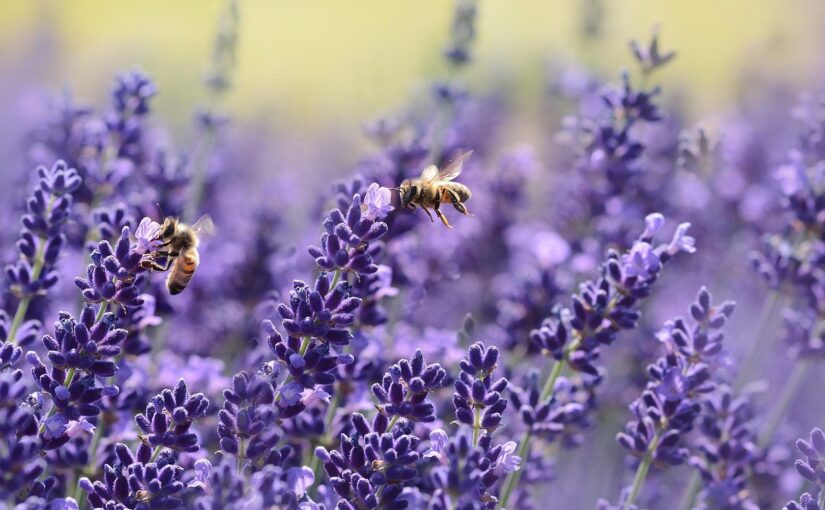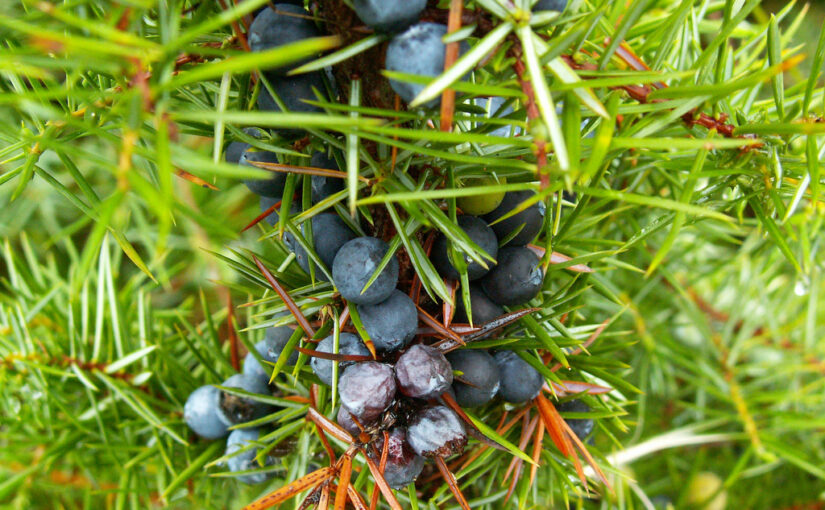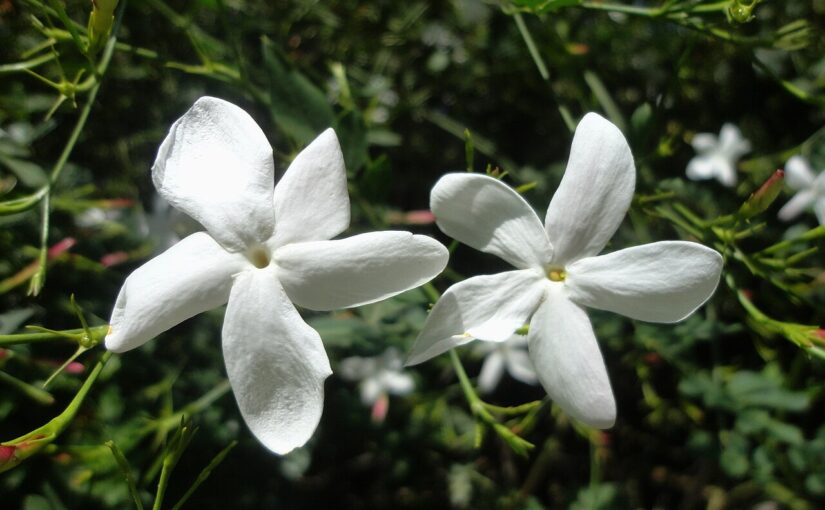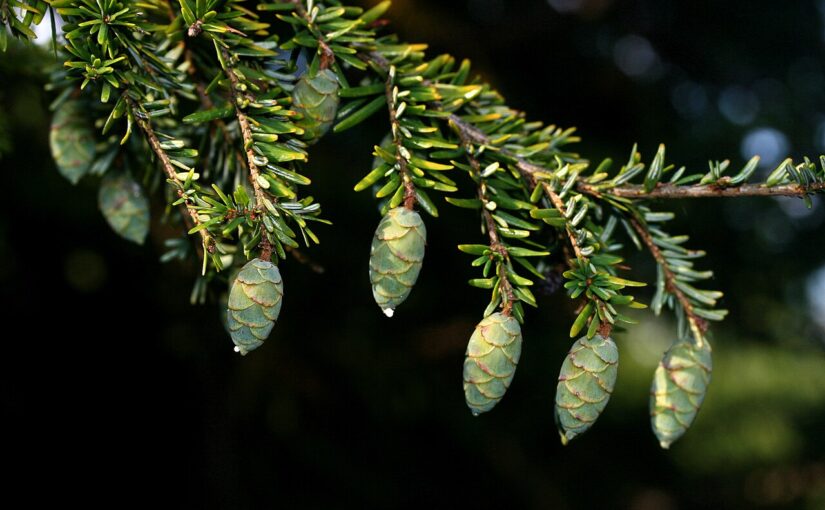Nothing says cozy mornings like the scent of apple and cinnamon filling the kitchen. These golden, fragrant rolls capture that comforting aroma perfectly. Soft pastry layers wrap around spiced apple filling, while a hint of cinnamon and ginger essential oils adds depth that feels both nostalgic and invigorating. Whether you serve them on a holiday morning or a quiet Sunday brunch, the aroma alone feels like a gentle hug.
Continue reading Apple Cinnamon Rolls with Cinnamon & Ginger Essential Oils 🍎✨Lavender Essential Oil: The Soothing Balm of Serenity
“Hot lavender, mints, savory, marjoram. The marigold, that goes to bed with the sun and him rise weeping.”—William Shakespeare, The Winter’s Tale
Lavender essential oil comes from Lavandula angustifolia, a plant in the Lamiaceae family native to the Mediterranean region, including France, Spain, and Italy. It is now grown worldwide in areas like Bulgaria, England, Australia, and the United States, with major production in France, Bulgaria, and Spain. The oil is steam-distilled from the flowering tops, resulting in a pale yellow to colorless mobile liquid. Its aroma is floral, herbaceous, sweet, and slightly woody, serving as a middle note in blends. Key constituents include linalool at 20 to 45 percent, linalyl acetate at 25 to 46 percent, along with lavandulyl acetate, trace camphor, 1,8-cineole, and terpinen-4-ol. These compounds contribute to its gentle, versatile nature in wellness applications.
Continue reading Lavender Essential Oil: The Soothing Balm of SerenityLavandin Essential Oil: The Vibrant Hybrid of Lavender
Lavandin essential oil stands out as a lively and practical option in the world of aromatherapy, blending the familiar calming essence of lavender with the bold energy of spike lavender. Derived from Lavandula x intermedia, this hybrid plant belongs to the Lamiaceae family and thrives in the sun-drenched fields of France, Spain, and other Mediterranean areas. Unlike its pure lavender parent, lavandin produces higher yields, making it a favorite for commercial cultivation. The oil is steam-distilled from the flowering tops of this hardy shrub, resulting in a thin, yellow to dark yellow liquid with an acridly aromatic scent that carries a slight camphor edge and a fresh, herbaceous quality. Classified as a middle note, its aroma is less sweet than true lavender but packs a stimulating punch, thanks to key constituents like borneol at 40 to 50 percent, camphor and 1,8-cineole at 10 percent each, linalool from 15 to 25 percent, linalyl acetate from 10 to 20 percent, and geraniol.
Continue reading Lavandin Essential Oil: The Vibrant Hybrid of LavenderKunzea Essential Oil: Tasmania’s Healing Treasure
Kunzea essential oil emerges from the rugged wilderness of Australia, specifically the pristine regions of Northeast Tasmania, Flinders Island, and coastal areas of Victoria and southern New South Wales. Derived from Kunzea ambigua, a shrub in the Myrtaceae family, the oil is steam-distilled from the plant’s leaves, twigs, and flowering branchlets. Commonly known as Tasmanian Kunzea, Tick Bush, or White Cloud, this essential oil appears clear to pale yellow or light amber with a thin to medium consistency. Its aroma is medicinal and eucalyptus-like, fresh with a slight spicy edge and clean, invigorating undertones, positioning it as a top-to-middle note in blends.
Continue reading Kunzea Essential Oil: Tasmania’s Healing TreasureKatafray Essential Oil: Madagascar’s Soothing Elixir
Katafray essential oil emerges from the unique ecosystems of Madagascar, offering a blend of traditional healing and modern wellness benefits. Derived from the bark of Cedrelopsis grevei, this oil captures the essence of the island’s dry, subarid landscapes. Native exclusively to Madagascar, the tree thrives in the western provinces of Toliara, Mahajanga, and Antsiranana, from sea level up to 900 meters in elevation. As a deciduous, bush-like member of the Rutaceae family, it adapts well to the seasonally dry tropical biome, producing pale yellow to golden amber oil of medium consistency through steam distillation. The aroma is earthy, balsamic, slightly sweet, and woody, serving as a grounding base note in aromatherapy and perfumery.
Continue reading Katafray Essential Oil: Madagascar’s Soothing ElixirJuniper Berry Essential Oil: The Purifier of Body and Spirit
Juniper berry essential oil comes from Juniperus communis, a resilient conifer in the Cupressaceae family. This plant thrives across the northern hemisphere, from the Arctic tundra and Scandinavia to Siberia, Canada, northern Europe, Asia, Tibet, the Himalayas, and North America. Cultivation focuses on regions like Austria, Canada, the Czech Republic, Slovakia, France, Germany, Bosnia, and Croatia. The oil is steam-distilled from the ripe, purplish-black berries of this evergreen shrub, yielding a pale yellow or greenish mobile liquid. Its aroma is fresh and green with woodsy and spicy undertones, including balsamic, peppery, and carrot-seedy notes. Classified as a middle note, it features key constituents such as alpha-pinene at 25 to 45 percent, beta-myrcene at 3 to 22 percent, sabinene at 4 to 20 percent, dextro-limonene at 2 to 8 percent, beta-pinene at 1 to 12 percent, germacrene D at 1 to 6.5 percent, and terpinen-4-ol. These compounds drive its cleansing and invigorating qualities.
Continue reading Juniper Berry Essential Oil: The Purifier of Body and SpiritJasmine Essential Oil: The Queen of Fragrance
Jasmine essential oil, often called the queen of oils, comes from species like Jasminum grandiflorum, Jasminum sambac, and Jasminum officinale, all part of the Oleaceae family. Native to the tropical and subtropical areas of Asia, including northern India, Pakistan, and the northwest Himalayas, jasmine also grows in parts of Africa and Europe. Cultivation now spans Mediterranean countries such as France, Italy, and Spain, along with Morocco, Egypt, China, Japan, Algeria, Turkey, and the United States. The oil, typically an absolute, is produced mainly in France through solvent or CO2 extraction from handpicked flowers, a labor-intensive process that captures its essence.
Continue reading Jasmine Essential Oil: The Queen of FragranceInula Essential Oil: The Respiratory Rescuer
Inula essential oil, derived from Inula graveolens, offers a potent natural solution for respiratory health and emotional balance. This oil, known also as sweet inula, belongs to the Asteraceae family and originates from the sun-drenched regions of the Mediterranean and parts of Asia. Cultivation has spread to areas like France, Italy, and the Balkans, where the essential oil is steam-distilled from the flowering tops and leaves, mainly in France and Morocco. The resulting product is a pale yellow to greenish liquid with a warm, herbaceous aroma that includes subtle camphoraceous notes and sweet, earthy undertones. Classified as a middle note, its scent profile is shaped by key constituents such as bornyl acetate, camphene, borneol, lactones like alantolactone, and various sesquiterpenes, which vary slightly but consistently support its mucolytic and antiviral capabilities.
Continue reading Inula Essential Oil: The Respiratory RescuerHops Essential Oil: The Soothing Brew of Rest
Hops essential oil emerges from the female flowers of Humulus lupulus, a climbing perennial in the Moraceae family. Native to China, hops has naturalized across temperate northern climates, including Europe, North America, and parts of Asia. The oil is primarily steam-distilled or solvent-extracted from the hop cones, with major production in Germany, the United States, and the United Kingdom, where these plants are cultivated for brewing. The resulting oil is a pale yellow to golden yellow liquid, featuring a dry, sharp, earthy aroma with spicy, herbaceous notes. Classified as a middle note, its scent profile is driven by key constituents like humulene, myrcene, caryophyllene, farnesene, cadinene, linalool, and muurolene, which underpin its therapeutic potency.
Continue reading Hops Essential Oil: The Soothing Brew of RestHemlock Essential Oil: The Coniferous Breath of Vitality
Hemlock essential oil, sourced from the needles and twigs of Tsuga canadensis, offers a refreshing essence rooted in the cool forests of eastern North America. Native to Canada and the northeastern United States, this coniferous tree thrives in moist, shaded environments and can live up to eight hundred years, symbolizing enduring strength. The oil is steam-distilled, resulting in a pale yellow to clear liquid with a fresh, piney, and woodsy aroma that serves as a top-middle note in aromatherapy. Its composition includes bornyl acetate, alpha-pinene, camphene, beta-pinene, myrcene, and limonene, which contribute to its respiratory support and anti-inflammatory qualities.
Continue reading Hemlock Essential Oil: The Coniferous Breath of Vitality








